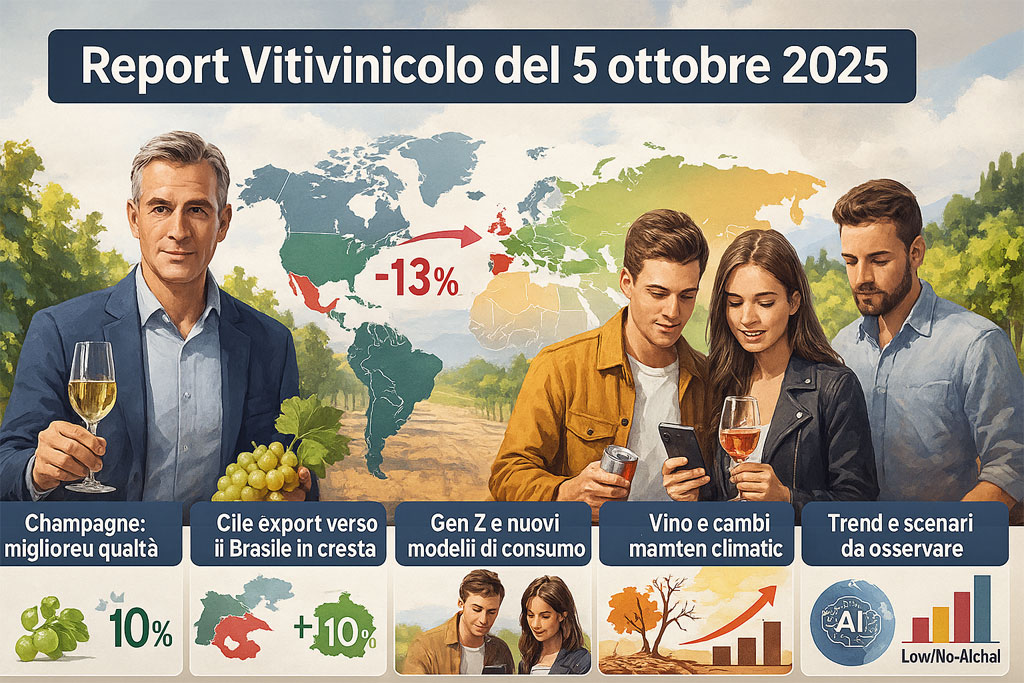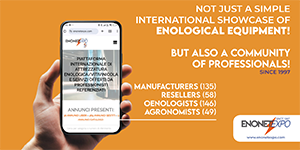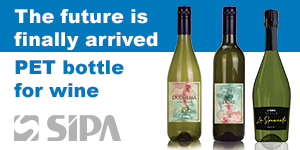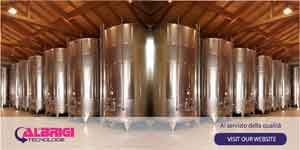with the most relevant elements useful as a basis for a strategic post in the wine sector:
- Champagne: Improving quality, but reduced harvest Champagne producers report a 2025 harvest that is 10% smaller than average, but with improved grapes that fuel hopes of a revival in international demand.
- Chile shifts exports to Brazil due to US tariffs. Chilean wine exports to the United States decreased by 13% (in value) in the first seven months of 2025, due to the introduction of a 10% tariff. At the same time, sales to Brazil increased by 10%, making it the main market for Chilean wine.
- Young people (Gen Z) are rewriting wine consumption. Generation Z is showing growing interest in low-alcohol, natural, sustainable wines, and innovative formats (such as cans and spritzes). The “barrier-free” approach in wine culture is trumping the traditional idea of exclusivity.
- Wine and Climate Change: The Structural Challenge A recent article highlights how many historic regions (e.g., Spain) are already precariously exposed to climate stress and how the industry is responding with sustainable practices, resilient grape varieties, altitudinal shifts, circular design, and carbon capture.
- Global vineyard values are declining. Due to the decline in global consumption, vineyard values have fallen significantly (up to 30–33%). Areas like Marlborough (NZ) are experiencing the greatest losses, while premium regions like Champagne and some areas of England are better able to withstand the pressure.
Trends and scenarios to keep an eye on
- AI, Big Data, and Sustainable Wine: A recent study (ArXiv) explores the adoption of Artificial Intelligence for viticulture management, wine production, and food and wine tourism, with impacts on water efficiency, predictive vineyard monitoring, and personalized customer experience. In parallel, another study shows how spectral analysis combined with machine learning models can profile wine origins with over 91% accuracy.
- Vinitaly.USA / wine2wine in Chicago (5–6 October 2025) The second edition of the forum is held at Chicago’s Navy Pier: 250 Italian exhibiting companies, focus on strategies for the American market, duties, promotion and B2B networking.
- Structural Weakness in the US Market and DTC Channels. The “State of the US Wine Industry 2025” report notes that consumption growth has stalled, with a combination of demographic factors (the decline of the Boomer generation) and social sensitivity to alcohol negatively impacting it. At the same time, direct-to-consumer (DTC) sales are showing signs of contraction, and US exports in value have fallen by 18% in some quarters.
- Emerging trends: low- and no-alcohol wines and new markets. The low- and no-alcohol wine segment is expected to grow strongly (over 20% by 2029), and format innovation (ready-to-drink, alcohol-free sparkling wines) is gaining ground. Furthermore, new geographic markets (Asia, Latin America, Northern Europe) are perceived as key opportunities for export diversification, especially in the context of rising tariffs.
- Alcohol Price Regulations: MUP vs. Volumetric Taxation A recent study models the impact of policies such as the minimum price per alcoholic unit (MUP) in France, finding that such policies would favor small and medium-sized wineries (39% profits), penalizing large producers without altering state revenues.





